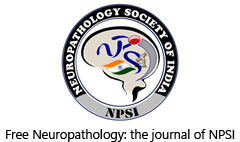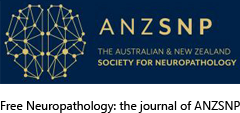Hypothesis: Entrapment of lipoprotein particles in the brain causes Alzheimer’s disease
DOI:
https://doi.org/10.17879/freeneuropathology-2021-3459Keywords:
Lipoprotein particles, Extracellular matrix, Cholesterol transport, Apolipoprotein E, Alzheimer’s diseaseAbstract
We present for consideration a hypothesis that impaired movement of lipoprotein particles in the extracellular space in the brain in ageing is central to and causes all the key pathophysiological features of Alzheimer’s disease (AD). The role of lipoprotein particles is to transport cholesterol from glial cells, where it is synthesised, to neurons, which require cholesterol for synaptic plasticity. The lipoprotein particles have a cholesterol-containing hydrophobic core, in which amyloid-β (Aβ) can be solubilised. The core is surrounded by a hydrophilic surface containing apolipoprotein E (APOE) which, as neurons bear receptors for APOE, determines the destination of the particles. The problem arises because the extracellular space is a narrow cleft, barely wider than the lipoprotein particles themselves, which they have to navigate in order to perform their crucial cholesterol-transporting function. We explain how lipoprotein particles could become trapped in the ageing extracellular matrix and that this primary abnormality results in reduced delivery of cholesterol to neurons leading to impaired synaptic plasticity, crucial for learning and memory. It can also explain extracellular Aβ accumulation, to which a microglial response generates a neurotoxic reaction, and intraneuronal tau aggregation, each of which exacerbate the problem. All these players have been known for many years to be important in Alzheimer’s pathogenesis but a single unifying mechanism to explain how they are linked has been lacking. This proposed mechanism, with entrapment of lipoproteins particles as key to the development of AD, can explain the failure of so many clinical trials and points out new directions to be taken.
Metrics
Published
How to Cite
Issue
Section
License
Copyright (c) 2021 Delphine Boche, James AR Nicoll

This work is licensed under a Creative Commons Attribution 4.0 International License.
Papers are published open access under the Creative Commons BY 4.0 license. This license lets others distribute, remix, adapt, and build upon your work, even commercially, as long as they credit you for the original creation. Data included in the article are made available under the CC0 1.0 Public Domain Dedication waiver, unless otherwise stated, meaning that all copyrights are waived.



















